Microsoft Office (now known as Microsoft 365) is one of the most widely used application suites for all kinds of projects in the modern office. Although Apple has built-in alternatives to Microsoft Office apps, they are still frequently used on Macs.
However, popular as it is, Microsoft Office doesn’t always show excellent performance. It may slow down and start beach-balling. These long wait times are frustrating and can affect your productivity. Luckily, there are a few proven ways to speed up Microsoft Office on your Mac, and we’ll cover them in this article.

Why is Microsoft Office slow?
While there are a few different symptoms indicating that Microsoft Office isn’t doing its best, such as a painfully slow opening of a program or Microsoft Word slow typing, the question stands: why is Microsoft Word so slow?
There are a variety of reasons Microsoft Office may run slowly, freeze, or cause the much-dreaded typing lag. Often, the issue stems from a build-up of corrupted or temporary files that are meant to be automatically deleted but, for whatever reason, have failed to do so. Of course, the application suite could also be out of date or attempt to load corrupted files. But, very likely, it’s just a large number of small problems that have snowballed and are now causing noticeable issues. Here’s how you can fix it.
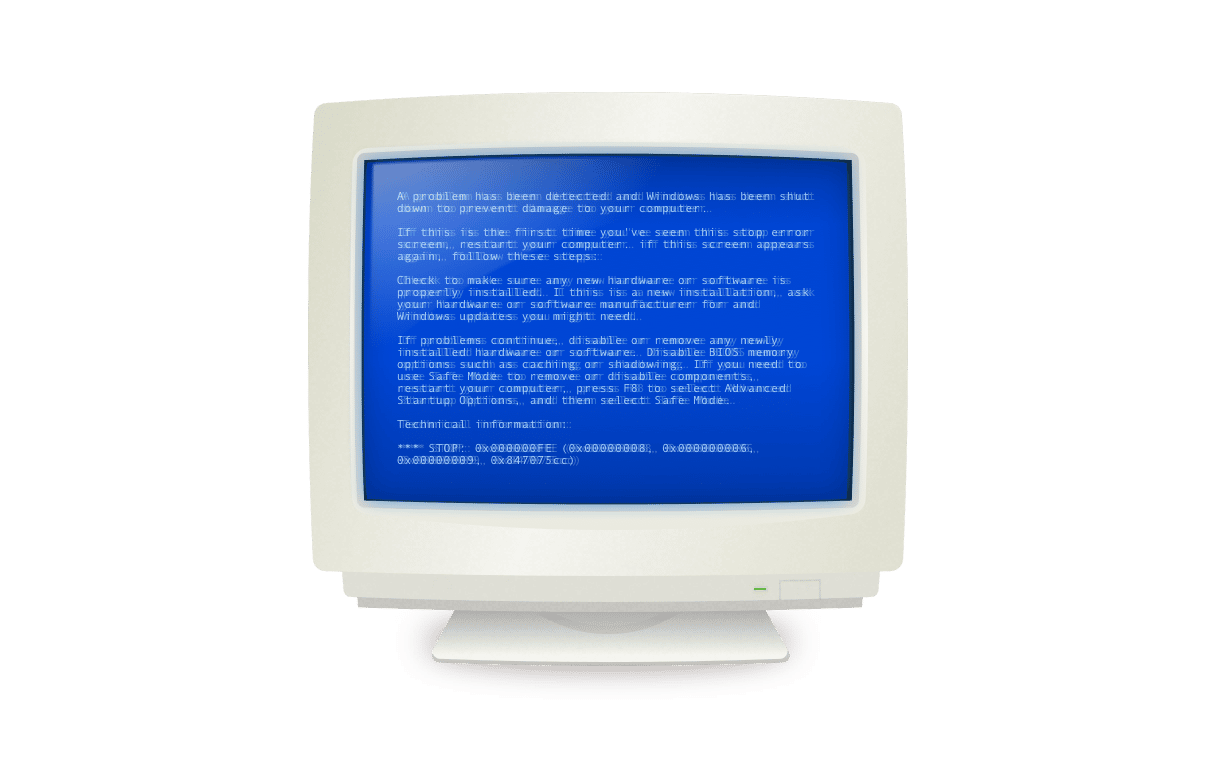
How to speed up Word and other Microsoft apps
1. Refresh go-to templates
The template file normal.dot is created by Microsoft Word and stored automatically on your computer. It saves all the default settings of the application. So each time you change your settings, the preference is added to normal.dot. This way, the next time Microsoft Word opens a new document, your preferred settings load automatically. However, if your normal.dot file becomes corrupted or too complex to load, it can make Microsoft Word slow.
Deleting the existing normal.dot file will force Microsoft Word to create a new one. Starting fresh will be easy for most users, as most of us don’t stray too far from the default settings. However, for those who change their default settings in complex ways, make sure you back up your normal dot files to a flash drive to avoid losing important settings permanently.
To find and delete normal.dot manually:
- Quit MS Word and open the Finder.
- Type normal.dot into the search field.
- Wait for all results to load. It’s not uncommon to have more than one normal.dot file. They may also appear as normal.dotm.
- Select all normal.dot and normal.dotm files and delete them.
- Empty your Trash.
Finally, reload the application and see if the process has managed to speed up Microsoft Word.
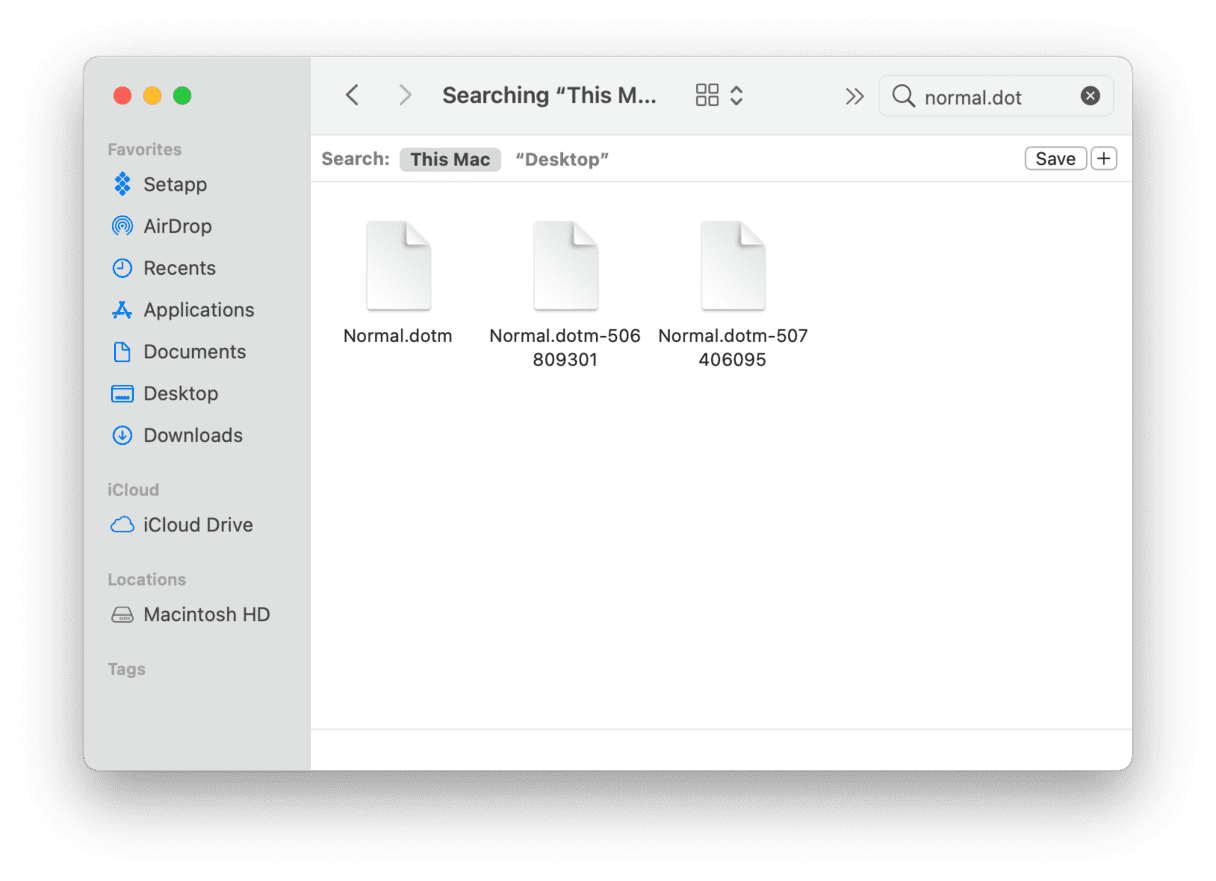
2. Delete temporary files
All Microsoft Office programs will create temporary files to prevent you from losing your work. However, if the automatic removal of these files fails, they can build up and make Microsoft Office slow.
You can easily seek out and remove these files:
- Determine which temporary files you want to delete. Microsoft’s website lists different types of temporary files that Microsoft Office produces automatically. The files you are looking for will be searchable using the tilde sign ~*.doc, ~*.dot, or ~*.tmp.
- Use Finder to search for files with ~*.doc or another marker.
- Select files to delete.
- Drag them to the Trash and empty it.
Once you are done, reload the application to see if that did speed up Microsoft Word.
3. Keep Microsoft Office updated
Having an outdated version of Microsoft Office will eventually cause it to run slowly. Luckily, updating the suite is very easy:
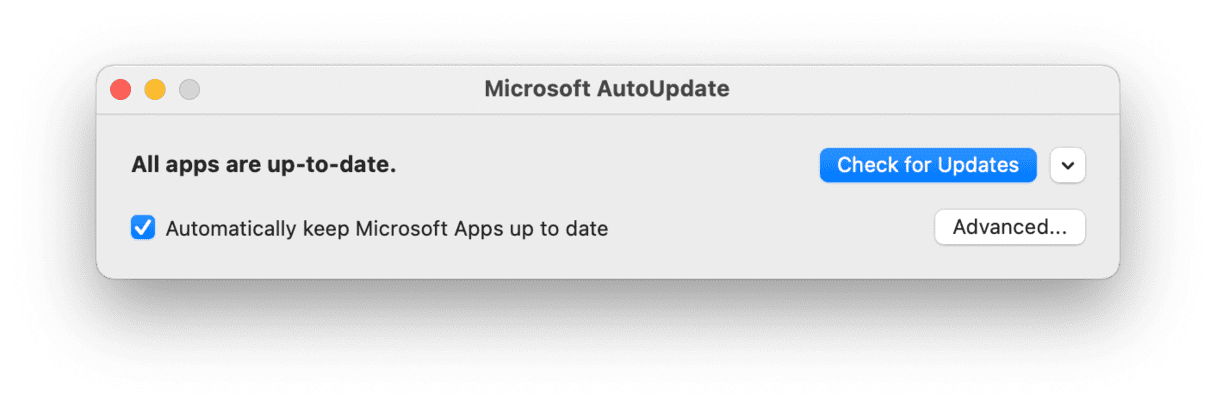
- Open Microsoft Word.
- In menu bar, select Help and click “Check for Updates.”
- Install the update if there is one.
Additionally, you can turn on Microsoft auto-updates using the same dialogue box so that whenever Microsoft Office detects a new version, it will offer you an opportunity to install it.
Another way to update Microsoft Office is to download the latest one from the Microsoft website directly. But before you do, check that it’s fully compatible with your version of macOS.
4. Reset the application to default settings
Over time, all Mac apps accumulate lots of unneeded preferences that constantly rewrite each other. A good way to rule out that there’s anything wrong with the app is to do a factory reset —bring the app back to the state when it was brand new.
You can do a factory reset in two ways:
- Go to Finder.
- Press Shift-Command-G to open the Go to Folder menu.
- Enter ~/Library and press Return.
- Look for Microsoft Office files in the results.
- Delete all of them but the app itself.
Alternatively, you can do the same thing quicker and more thoroughly with the Applications feature in CleanMyMac:
- Get your free CleanMyMac trial.
- Go to Applications and run a scan.
- Click Manage My Applications and find Microsoft Office.
- Click the “>” sign and select all the app’s files, except for binaries.
- Click Remove to reset the app.
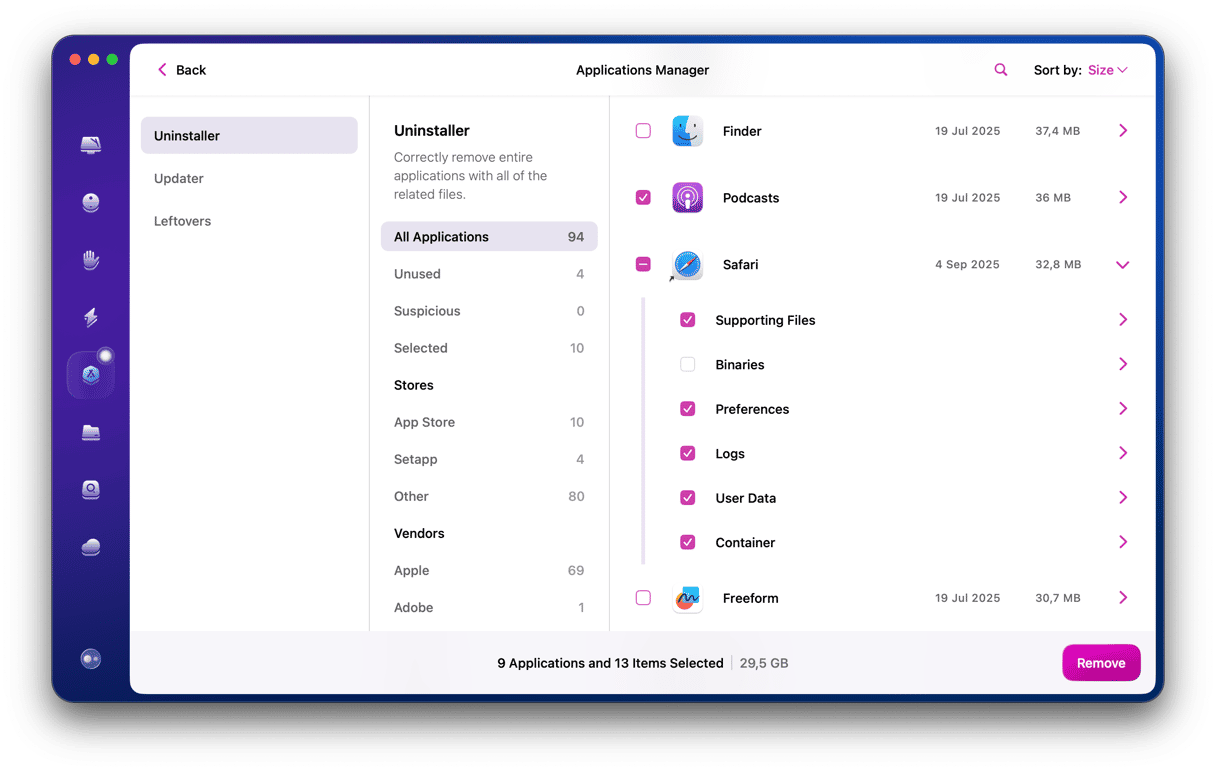
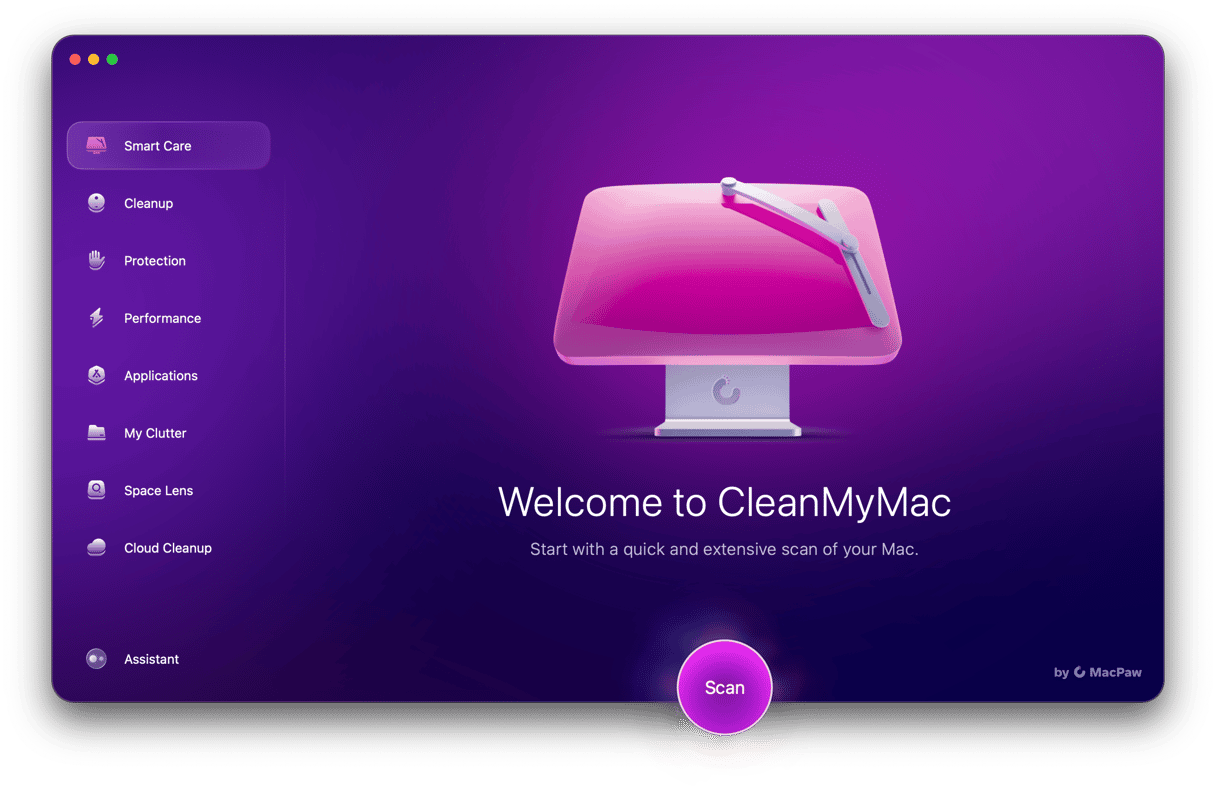
5. Delete and reinstall Microsoft Office
The old IT adage “have you tried turning it off and back on?” applies here, but in this case, it’s about deleting the application and reinstalling it. To completely delete Microsoft Office, you will need to remove files from two different places on your computer: delete the app first and then find your Library folder in Finder to see the associated files that need to be removed.
- Head to the Applications folder and move Microsoft Office or Microsoft 365 to the Trash.
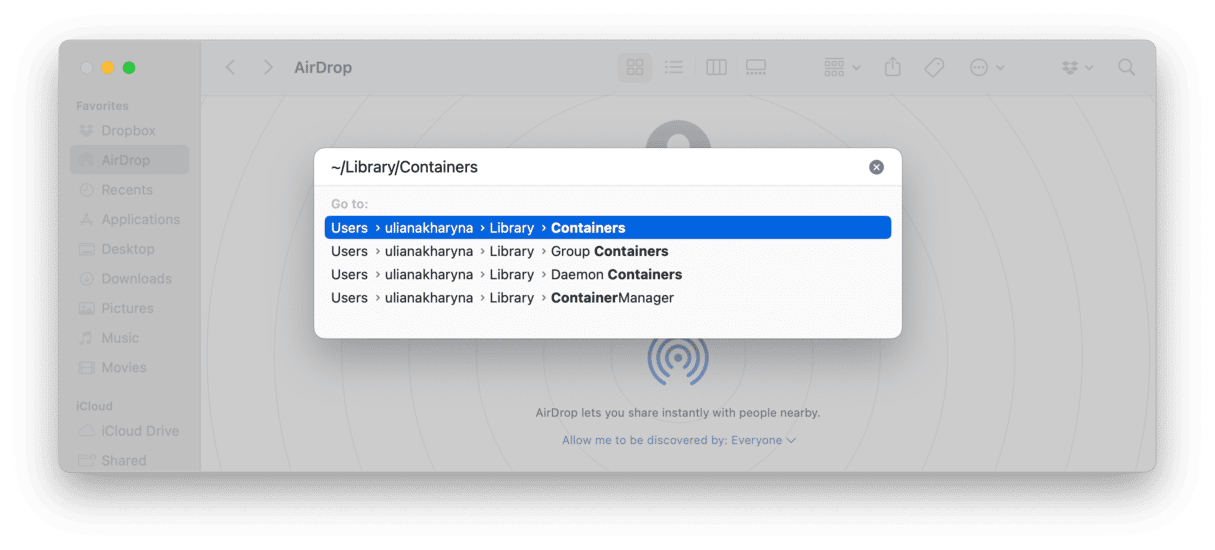
- Press Shift-Command-G and navigate
~/Library/Containers - From Containers, move the following associated files to the Trash:
- com.microsoft.errorreporting
- com.microsoft.Excel
- com.microsoft.netlib.shipassertprocess
- com.microsoft.Office365ServiceV2
- com.microsoft.Outlook
- com.microsoft.Powerpoint
- com.microsoft.RMS-XPCService
- com.microsoft.Word
- com.microsoft.onenote.mac
- Open the Group Containers folder as well and remove the following files:

- UBF8T346G9.ms
- UBF8T346G9.Office
- UBF8T346G9.OfficeOsfWebHost
- UBF8T346G9.ms
- Finally, remove Microsoft Office from the Dock and restart your Mac.
Once removed, head back to the Microsoft website, sign in to your account, and install the latest version.
6. Optimize documents for storage
Keeping Microsoft Office functioning properly means saving documents in their most optimized state. Resizing large images or graphics and not overloading your files with macros will help you maintain speedy performance in the long run.

Ultimately, there are several ways to get Microsoft Office to run smoothly again. Most of them come down to the cleanup, and luckily, it’s entirely possible to manually do most of that work. Hopefully, one of the tips above helped you fix the Microsoft Office slow issue and bring your productivity to its peak again.







